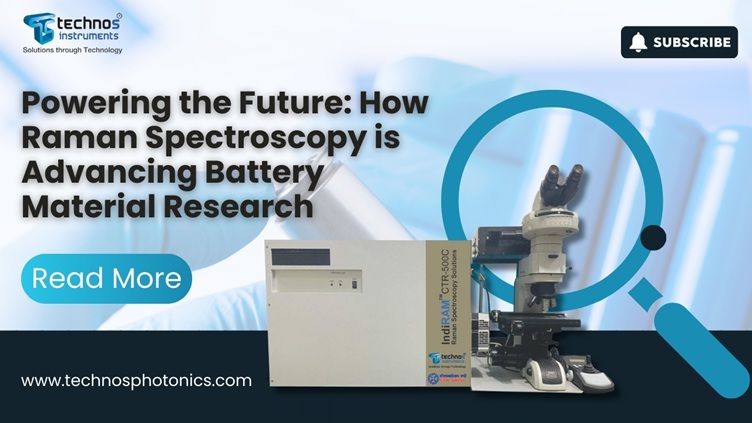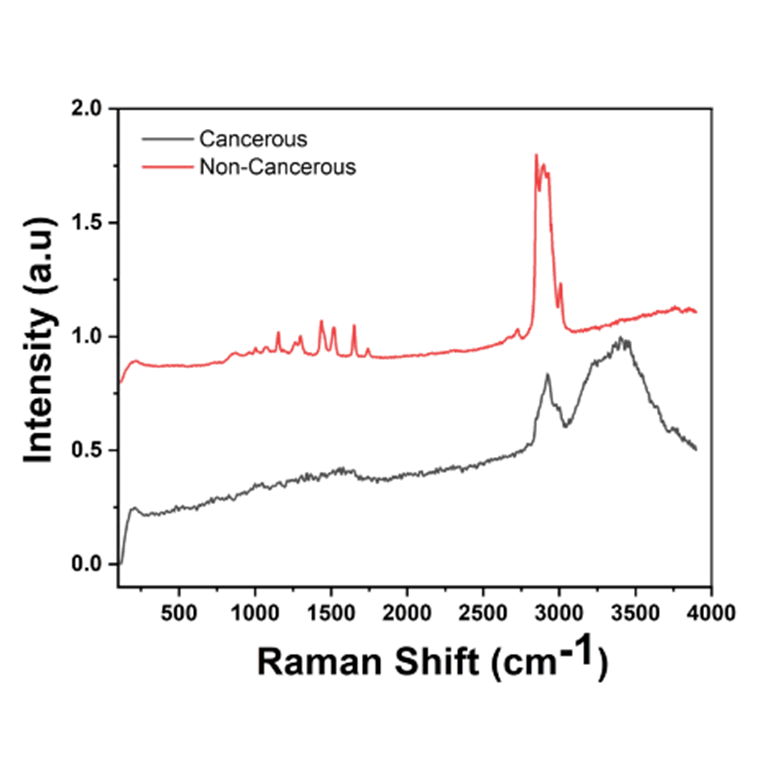
Powering the Future: How Raman Spectroscopy is Advancing Battery Material Analysis
Powering the Future: How Raman Spectroscopy is Advancing Battery Material Analysis
April 7, 2025

How Raman Spectroscopy is Advancing Battery Research
The growing demand for efficient and safe energy storage has made battery technology a key focus of innovation. To enhance performance and longevity, researchers study battery materials using Raman Spectroscopy, a non-destructive tool providing molecular-level insights. This article explores its principles, applications, advancements, and role in future energy storage solutions.
Fundamentals of Raman Spectroscopy
Raman Spectroscopy is based on the Raman Effect, which occurs when monochromatic light interacts with a sample, causing a small fraction of photons to undergo inelastic scattering. This results in a shift in the scattered light's wavelength, known as the Raman shift, which provides a unique vibrational fingerprint of the material. The Raman spectrum helps identify chemical bonds, molecular structures, and phase transitions within materials, making it a valuable tool for material characterization. Raman Spectroscopy has several advantages over other techniques:
Raman Spectroscopy has several advantages over other techniques:
• Non-destructive and minimal sample preparation
• Capability for in-situ and operando analysis
• High specificity in identifying molecular structures
• Compatibility with a wide range of materials
Applications of Raman Spectroscopy in Battery Material Analysis
Raman Spectroscopy plays a crucial role in studying battery materials, including cathodes, anodes, and electrolytes. It helps in analysing chemical composition, structural properties, degradation mechanisms, and material performance under operational conditions.
1. Identifying Chemical Composition and Purity
Battery materials must have precise chemical compositions to ensure optimal performance. Raman Spectroscopy is used to verify the stoichiometry and purity of raw materials such as lithium hydroxide and lithium metal oxides. It can also detect contaminants that may degrade battery efficiency.
2. Monitoring Structural Changes in Battery Components
During charging and discharging cycles, electrode materials undergo structural changes that affect battery performance. Raman Spectroscopy allows real-time monitoring of these transformations, helping researchers understand phase transitions, lithium-ion intercalation, and solid electrolyte interphase (SEI) formation.
3. Investigating Electrode Degradation and Safety
One of the major challenges in battery technology is degradation over time. Raman Spectroscopy provides insights into electrode deterioration, electrolyte decomposition, and SEI layer evolution. This knowledge is essential for developing strategies to enhance battery lifespan and safety.
Advancements in Raman Spectroscopy for Battery Research
Recent innovations have expanded the capabilities of Raman Spectroscopy, making it even more effective for battery material analysis:
1. In-situ and Operando Raman Spectroscopy
These techniques allow researchers to analyse battery materials in real time while they are operating. This is critical for observing dynamic changes such as lithium-ion diffusion, phase transitions, and electrolyte stability.
2. Raman Imaging and Mapping
By capturing Raman spectra from multiple points on a sample, researchers can create detailed chemical maps. This helps identify material in homogeneities, electrode coating distribution, and degradation patterns at the microscopic level.
3. Surface Enhanced Raman Scattering (SERS)
SERS amplifies weak Raman signals by using plasmonic nanoparticles, making it possible to detect surface reactions with higher sensitivity. This is particularly useful for studying electrolyte-electrode interactions.
4. Multi-Wavelength Raman Spectroscopy
Using different laser wavelengths enhances the detection of specific components within battery materials. This technique helps in distinguishing phases, identifying impurities, and enhancing the Raman signal for targeted analysis.
Case Study: Enhancing Battery Technology through Material Characterization
Battery performance and longevity are directly impacted by the materials used in their construction, making precise characterization a critical step in battery development. In this study, researchers utilized Raman spectroscopy, a rapid and effective analytical technique, to investigate key battery materials, including electrodes and electro-catalysts. Using the IndiRAM CTR-500C spectrometer, they analyzed industrial-grade graphene, anode materials, and reduced graphene oxide (rGO). The spectral data provided valuable insights into material properties, helping optimize battery efficiency and reliability, ultimately driving advancements in energy storage technology.




The Future of Raman Spectroscopy in Battery Research
As battery technology continues to evolve, the role of Raman Spectroscopy will expand in several key areas:
• High-throughput material screening for discovering new battery chemistries.
• Integration with AI and machine learning for faster and more accurate data interpretation.
• Portable and real-time Raman devices for on-site battery monitoring.
• Advanced hybrid techniques combining Raman with other spectroscopy and imaging methods.
Conclusion
Raman Spectroscopy has become an indispensable tool in battery material analysis and research, offering molecular-level insights that drive innovation in energy storage technology. From analysing raw materials to monitoring battery performance in real-time, this technique provides critical data for developing next-generation batteries. With continuous advancements, Raman Spectroscopy will play an even greater role in designing safer, more efficient, and longer-lasting batteries, helping to power the future of sustainable energy solutions.
Related Articles
- Behind the Pills Identifier: Unmasking Illicit Drugs with Raman Spectroscopy
- Crystal Clarity: Understanding Quartz Through Raman Spectroscopy
- Field Testing Simplified: Benefits of Portable Raman Spectrometers
- Gemstone Identification with Raman Spectroscopy: Preserving Purity, Authenticity, and Trust in the Industry
- IndiRAM Raman Spectrometer for identification of Excipients in Pharmaceutical Drugs
- Innovations in Raman Spectroscopy: TechnoS at the Forefront
- Microplastic Contamination Detection in Food Grains: A Raman Spectroscopy Approach
- Principle of Raman Spectroscopy & Core Components
- Raman Spectroscopy: A Transformative Tool Across Science, Industry, and Society